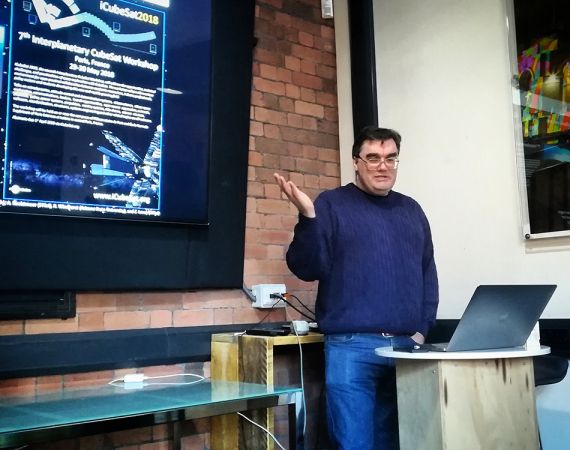Lunchtime talk write-up
Posted on Wed 6 Dec 2017
Exploring space for fun, science and profit!
Space exploration used to be something only available to scientists, astronauts.. however these days it is possible to launch your very own spacecraft to the Moon!

Posted by
Speaker

Michael Johnson
Michael is a physicist on a mission to kick start the personal space age by giving everyone the opportunity to own their own spacecraft.Space exploration used to be something only available to scientists, astronauts working at Universities and Space agencies like NASA. However these days it is possible to send your name to Mars, launch your very own spacecraft to the Moon or even help to discover exoplanets!
Five Things I Learned:
1. Michael Johnson joined the Studio in 2013 and is the founder of Pocket SpaceCraft. The company creates open source and open access space craft that an individual can afford. Over the last eight years Michael has been interested in launching these pocket space craft into space. On average the world sends out one spacecraft per year, which is nowhere near enough to efficiently explore space.
2. In 2012 Michael created the first ever space mission on Kickstarter, which was successfully funded $74,586 out of an original pledge of $20,000 by 315 backers. One of the kick-starter rewards for a $10,000 donation allowed the donator to press the big red button that would launch the aircraft into space! Michael approached NASA to help get the project off the ground and has now launched the most spacecraft behind America and Russia.
3. The smaller the craft the significantly cheaper the cost becomes. The actual space craft is so small and weighs less than quarter of a gram. This super thin craft is equipped with printed electronics and was designed here in the studio. For just £100 per spacecraft, anyone can build and can print them. The prints are made using a special printer which could in future be sent into space, allowing new designs to be created from earth
4. Michael wants to scatter these discs in orbit all over the moon’s surface. Michael is hoping to launch these spacecraft March next year. There are four copies of same system on each disc which increases data picked up. One challenge is securing a concrete launch date and it’s a hard ask to get people to pay for a space craft and then make them wait anywhere from 7 months to 7 years.
5. Michael would also like to take a mission to Venus and Saturn, although the latter is trickier as the rings would destroy the spacecraft. The advantage of small cheap space craft is that you can send hundreds to record the rate of how many are destroyed, as this is useful information in itself. Interplanetary CubeSat mothership works in a similar way, it tests by damaging the ship parts and redesigning them to withstand the damage so they can survive for longer in space.
